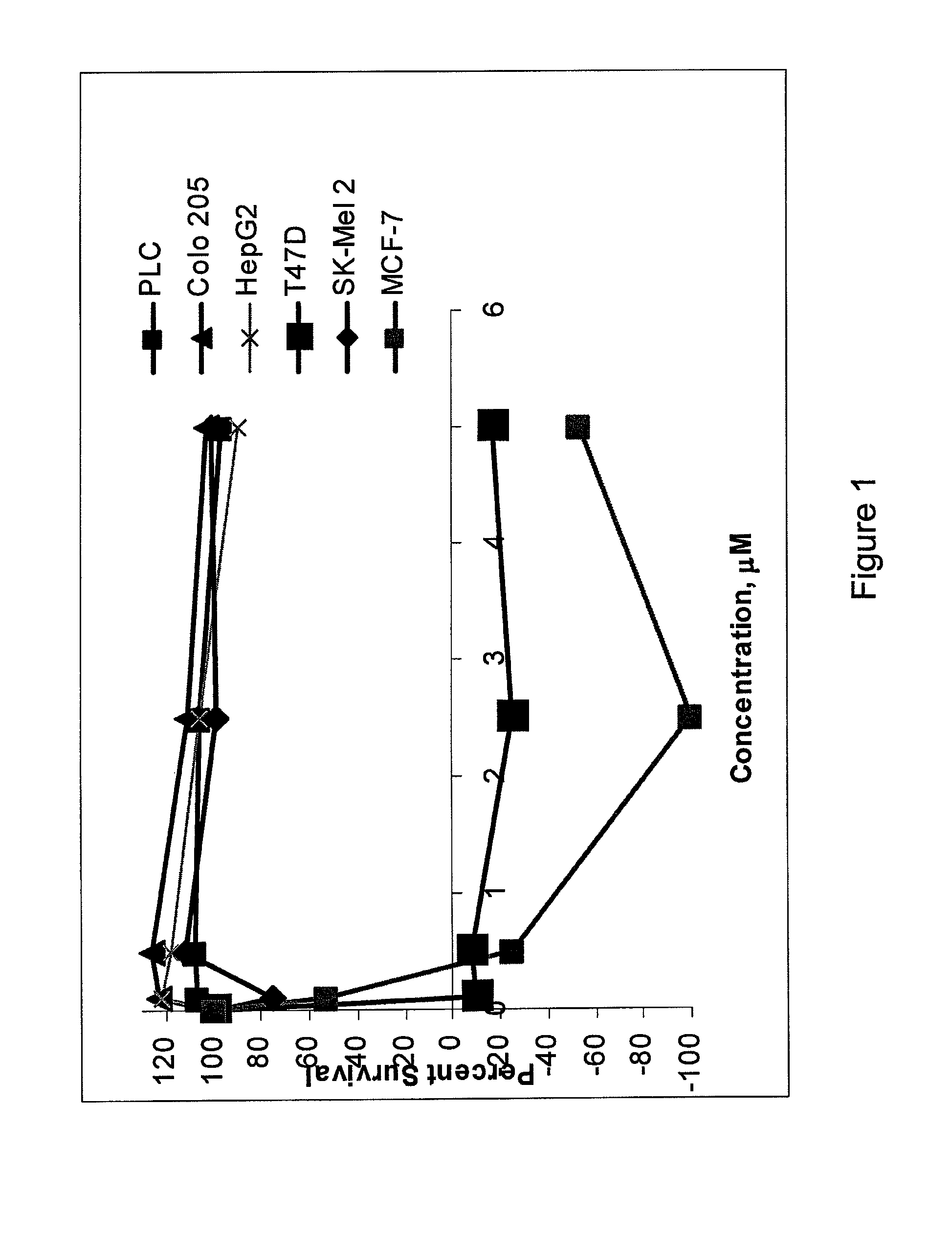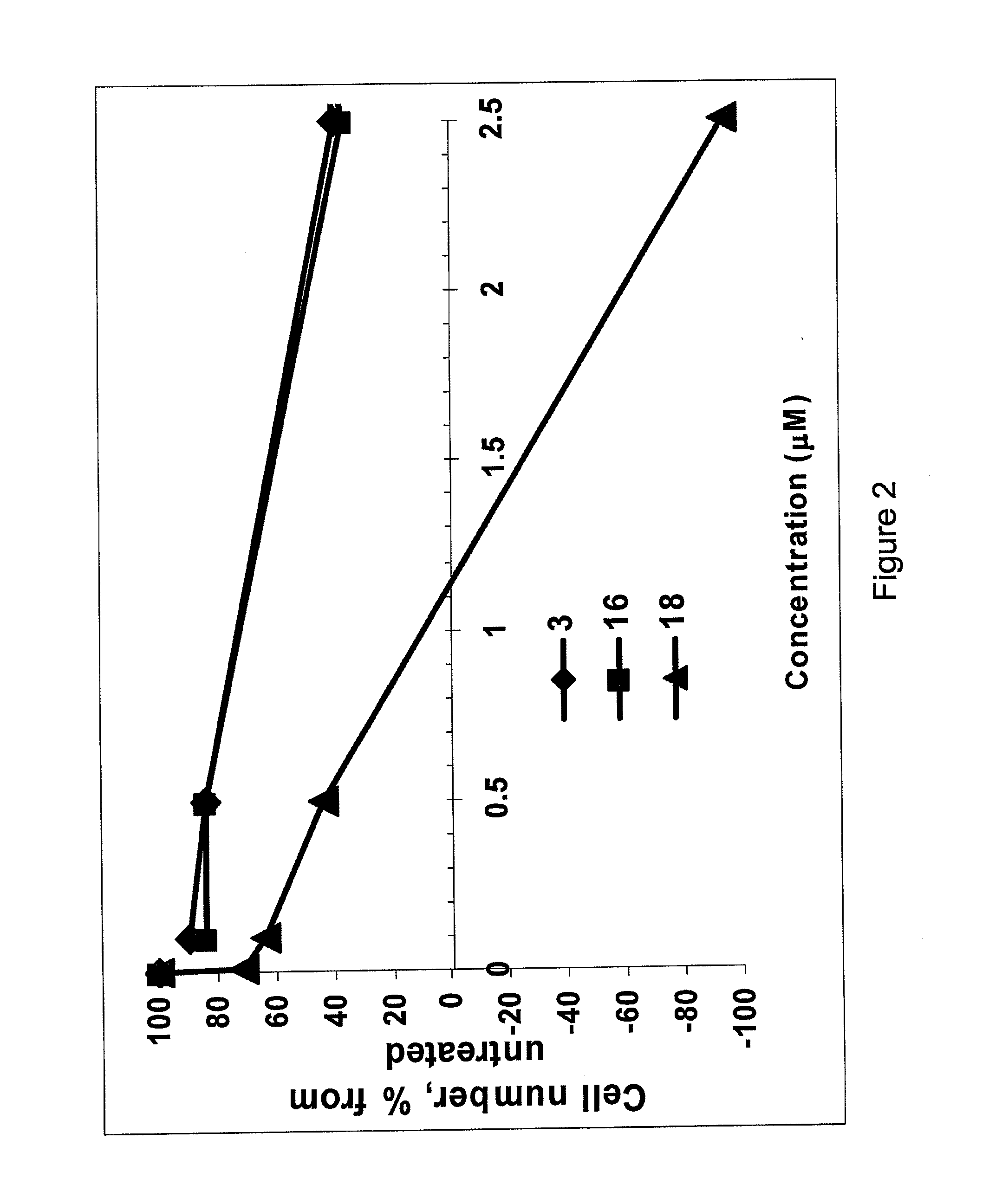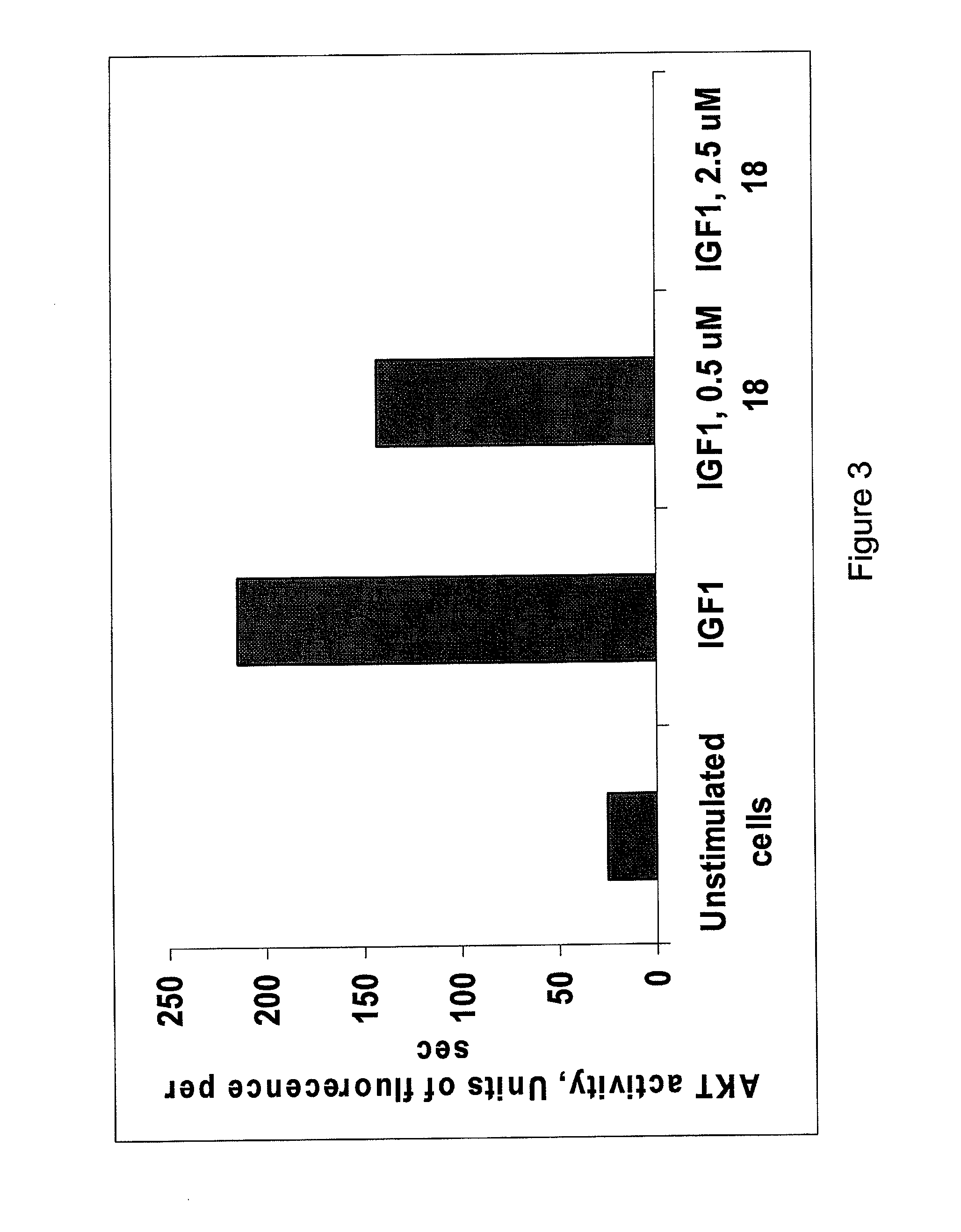Synthetic analogs of the juxtamembrane domain of igf1r and uses thereof
- Summary
- Abstract
- Description
- Claims
- Application Information
AI Technical Summary
Benefits of technology
Problems solved by technology
Method used
Image
Examples
example 1
[0068]The following example illustrates the use of peptides and peptidomimetics to inhibit IGF1R activity in breast cancer cells, in accordance with the invention. Four peptides were synthesized, which corresponded to the entire IGF1R juxtamembrane (JM) region (residues 929-954) (peptide 1) and truncated versions of the JM region (peptides 1-3) (see Table 3). The truncations were introduced at Gly and Pro residues believed to cause bends in the secondary structures of proteins and peptides. Several additional peptides were prepared (peptides 5-24 and 27) by further truncation or elongation of peptides 1-4. To enable cell penetration, all peptides were equipped with palmitoyl residue on the N-terminus. The palmitoyl residue also anchors the JM analogs to the plasma membrane, thus providing for a better mimic of the native structure of the JM region. The ability of the cells to inhibit IGF1R resulting in inhibition of cell growth or survival was evaluated in MCF-7 breast cancer cells ...
example 2
[0074]The following example illustrates the cell-growth inhibitory properties of peptides of the invention in various cell lines, and shows that growth inhibition is due to inhibition of IGF1R activity.
[0075]Peptide 9 of Example 1, one of the most potent IGF-1R JM analogs, was tested for cell growth inhibition of MCF-7 (breast cancer), T47D (breast cancer), Colo 205 (colon cancer), JM-1 (rat hepatoma), Sk MeI-2 (melanoma), PLC (human hepatoma), and HepG2 (human hepatoma) cells using the alternative assay described above. The results are presented in FIG. 1. As the results show, peptide 9 exhibited significant cell-growth inhibitory properties in breast cancer cell lines. Lack of activity in some cell lines did not reflect the insensitivity of corresponding tumors because prolonged culturing of tumor cells in medium containing high serum levels selects for cells that are dependent on growth factors present in serum rather than the ones provided by tumor environment.
[0076]The toxicity...
example 3
[0078]The following example illustrates that the peptides and peptidomimetics of the invention inhibit IGF-1R kinase activity.
[0079]Stimulation of IGF-1 receptor is known to lead to activation of AKT kinase, which is considered to be a marker of IGF pathway signaling. Peptide 18 of Example 1 was tested for the ability to change the levels of intracellular AKT activity in cells stimulated with IGF-1 utilizing a fluorogenic substrate of the kinase. The AKT assay is described above, and the results of the assay are presented in FIG. 3. As expected, the non-stimulated cells exhibited little AKT activation. Addition of IGF-1 lead to significant elevation of enzyme activity. As the concentration of inhibitor increased from 0 to 0.5 μM to 2.5 μM the enzyme activity decreased to undetectable levels.
[0080]Other experiments have shown that peptide inhibitors described herein are less effective in inhibiting insulin-induced AKT activity in MCF-7 cells indicating that the peptide inhibitors sel...
PUM
| Property | Measurement | Unit |
|---|---|---|
| Fraction | aaaaa | aaaaa |
| Molar density | aaaaa | aaaaa |
Abstract
Description
Claims
Application Information
 Login to view more
Login to view more - R&D Engineer
- R&D Manager
- IP Professional
- Industry Leading Data Capabilities
- Powerful AI technology
- Patent DNA Extraction
Browse by: Latest US Patents, China's latest patents, Technical Efficacy Thesaurus, Application Domain, Technology Topic.
© 2024 PatSnap. All rights reserved.Legal|Privacy policy|Modern Slavery Act Transparency Statement|Sitemap



